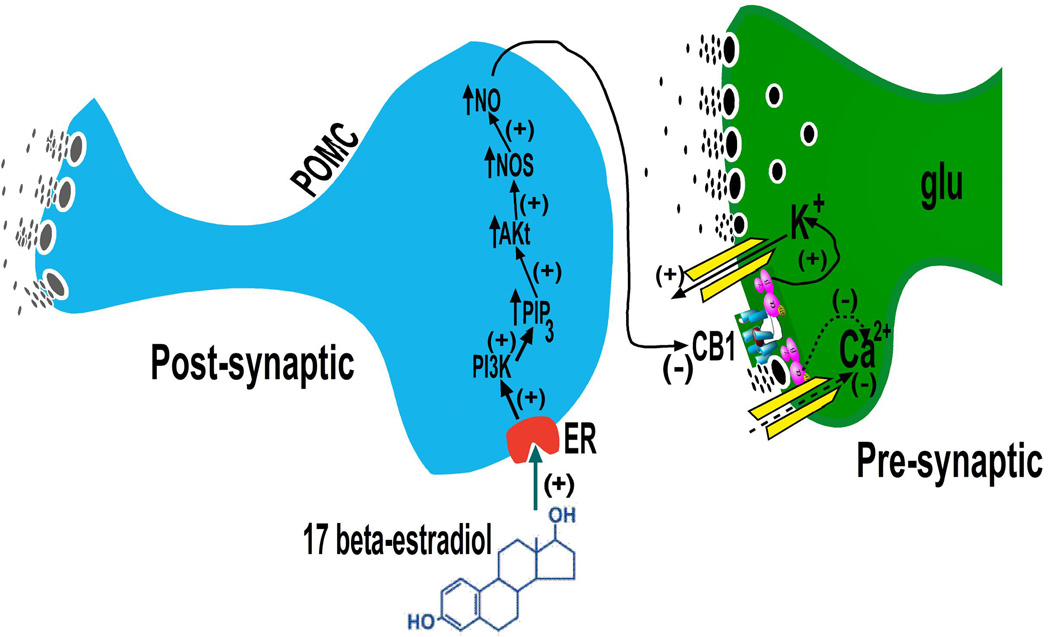Figure 1.
Schematic illustration of how estradiol impairs CB1 receptor-mediated signaling at glutamatergic inputs onto POMC neurons. Estrogens rapidly uncouple cannabinoid CB1 receptors from their effector systems in the glutamatergic nerve terminal by activating nNOS. This is achieved through an increase in PI3K, which enhances phosphatidylinositol triphosphate (PIP3), in turn up-regulating Akt leading to augmented nNOS. The increased enzyme activity may reduce endocannabinoid tone either by inhibiting synthesis, enhancing breakdown, or promoting reuptake and removal from the synaptic cleft. Alternatively, the nitric oxide produced may act retrogradely to uncouple the CB1 receptor from its effector system(s) in the glutamatergic nerve terminal. Modified from (Mela et al., 2015).

